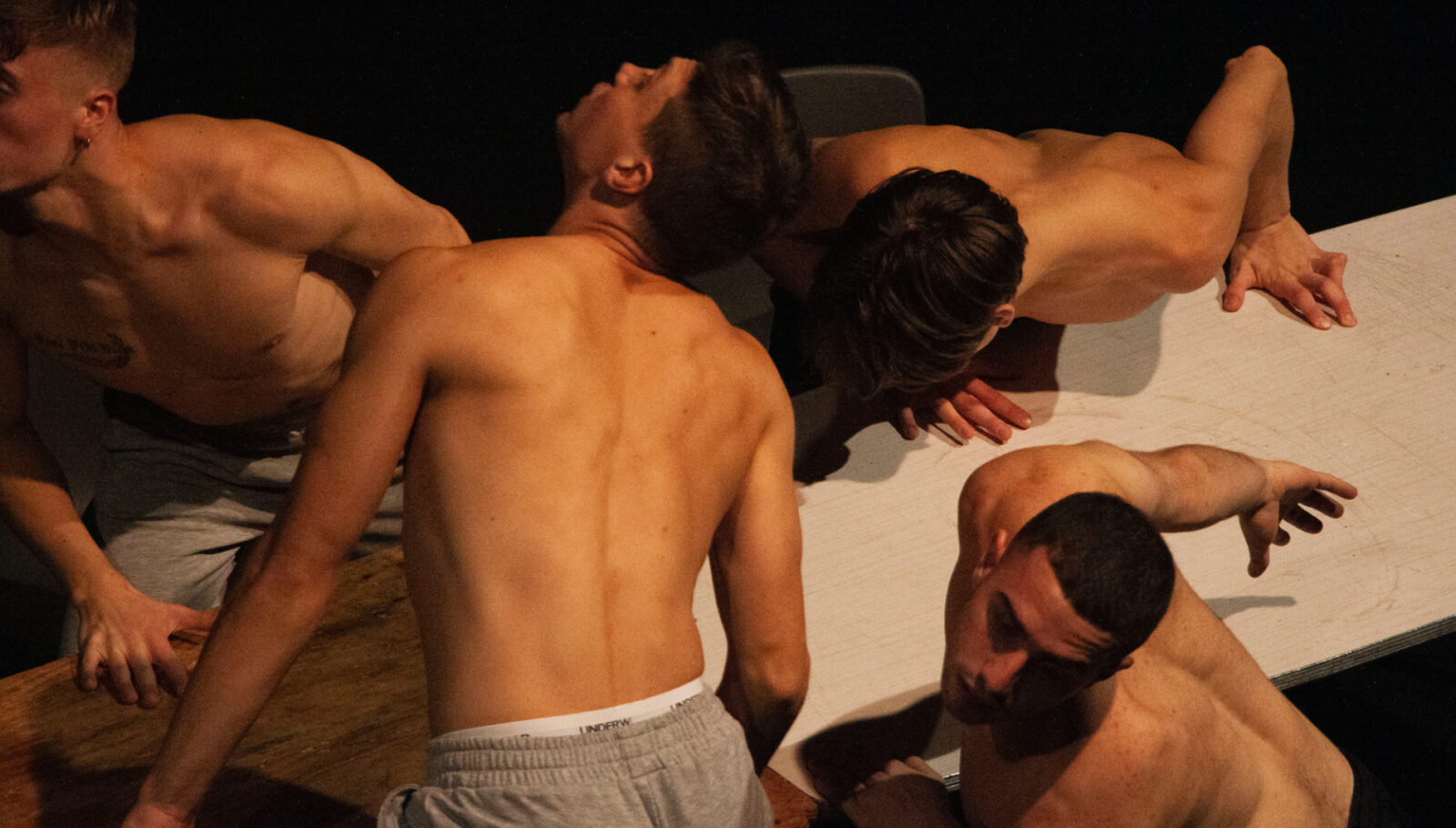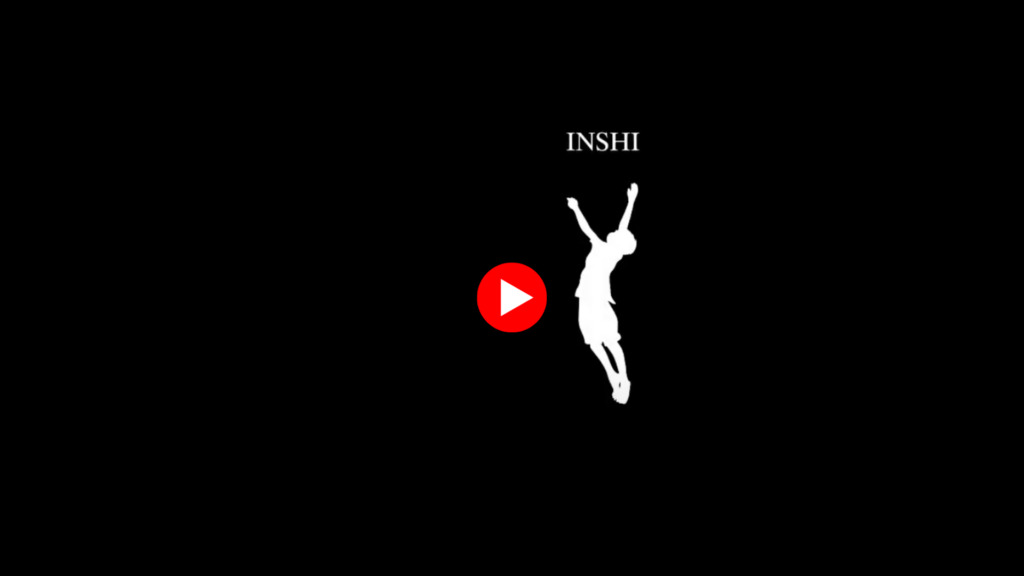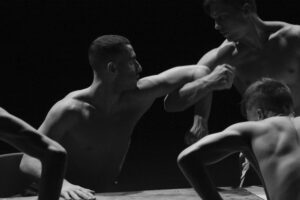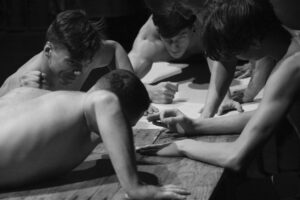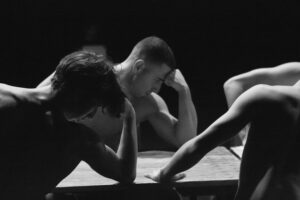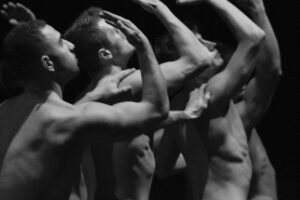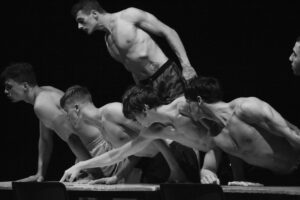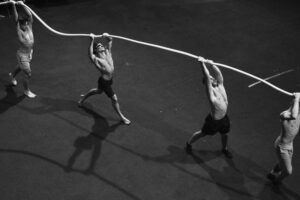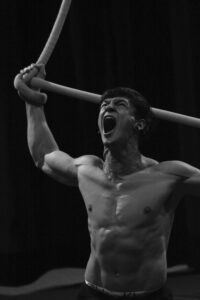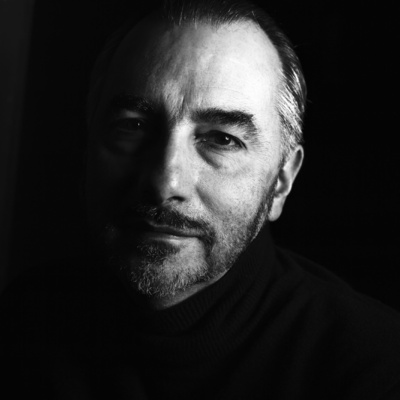“The Stage is My Reality, the Theatre is My Fortress”: Cirque Inshi’s “Rêves”
Performed at the Théâtre Graslin in Nantes, France, Rêves by the Ukrainian company Cirque Inshi conveys the stories and values of its cast and creators through their on-stage feats. In this review, Pascal Jacob reveals the skills and philosophies it puts on showcase.
 Developed and created in exile,Rêves is a show about memory and childhood, a light meditation on life, death and God, and a powerful evocation of an upcoming world where the scent of flowers haunts the dreams of a man… but it is also a creation that never stops talking about love and hope. And beauty. They are seven of them on stage, seven boys built for circus, shaped by acrobatics, dance, and awareness of the perfect gesture and carried by the desire to be there, alive and strong. They are all Ukrainian, and proud to be, because even on the stage of a theatre far from Kiev or Odessa, their homeland seems to vibrate under their feet, and they embody the power of a people facing the violence of opposing forces. They do not compromise on their identity. From one sequence to another, they reveal that they are also warriors. Their weapons are beauty and virtuosity, energy and youth: the metaphor of a country that struggles and resists, both for its own freedom and, undoubtedly, also for ours.
Developed and created in exile,Rêves is a show about memory and childhood, a light meditation on life, death and God, and a powerful evocation of an upcoming world where the scent of flowers haunts the dreams of a man… but it is also a creation that never stops talking about love and hope. And beauty. They are seven of them on stage, seven boys built for circus, shaped by acrobatics, dance, and awareness of the perfect gesture and carried by the desire to be there, alive and strong. They are all Ukrainian, and proud to be, because even on the stage of a theatre far from Kiev or Odessa, their homeland seems to vibrate under their feet, and they embody the power of a people facing the violence of opposing forces. They do not compromise on their identity. From one sequence to another, they reveal that they are also warriors. Their weapons are beauty and virtuosity, energy and youth: the metaphor of a country that struggles and resists, both for its own freedom and, undoubtedly, also for ours.
In the precious setting of the Graslin Theatre, a building constructed in the 18th century, the concept of establishing a pact with benevolent ghosts seems very natural. Blue velvet draperies and the gilded wood of the columns and pilasters create a very clear distance from the radicality of the plateau, empty and dark, barely revived by a few touches of light that enliven the artists and give raw power to each one’s respective presence. They display a confusing dexterity with balls and rings, but they also possess overwhelming fragility and exceptional bodily flexibility—which, for at least two of them, is almost supernatural…
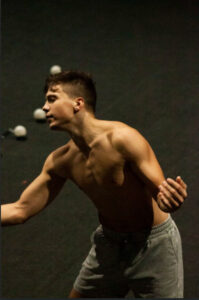 Director Roman Khafizov’s imagination is ideally suited to the extreme ductility of his performers, all of whom have embarked on the symbolic deck of the same ship, convinced of the importance of such a project to escape the pain of exile and the impossibility of exercising their art. Here, the only apparatuses are the acrobats’ bodies; a smooth rope, as white as bone, and a few gleaming aluminum rods are the sole exceptions that further justify the rule. Backs, feet, torsos, thighs, shoulders and hands—so many fragments appreciated as some of the strong symbols of a coded alphabet that blooms only with effort—mingle with or move away from one another to define a sharp acrobatic writing wherein partnership and listening to others are decisive. “Others,” or more precisely, Inshi in Ukrainian, is the name of this company: a principle of otherness that resonates well with the natural sense of void that has always existed between the circus arts and other spectacular or plastic art forms.
Director Roman Khafizov’s imagination is ideally suited to the extreme ductility of his performers, all of whom have embarked on the symbolic deck of the same ship, convinced of the importance of such a project to escape the pain of exile and the impossibility of exercising their art. Here, the only apparatuses are the acrobats’ bodies; a smooth rope, as white as bone, and a few gleaming aluminum rods are the sole exceptions that further justify the rule. Backs, feet, torsos, thighs, shoulders and hands—so many fragments appreciated as some of the strong symbols of a coded alphabet that blooms only with effort—mingle with or move away from one another to define a sharp acrobatic writing wherein partnership and listening to others are decisive. “Others,” or more precisely, Inshi in Ukrainian, is the name of this company: a principle of otherness that resonates well with the natural sense of void that has always existed between the circus arts and other spectacular or plastic art forms.
Rêvesis an unexpected journey between heaven and earth, a powerful allegory for the need to live together and build a space that brings us all together, stone by stone. Between rage and dexterity, the juggling sequences that follow one after another are undoubtedly where the show’s originality is forged from the potential of each of the acrobats who give life to it.
Chance has granted to a single discipline the honor of numbers. Three jugglers, three ways, and three moments, but each one with the same intensity. With an exceptional energy that unfolds at the service of a singular aesthetic. These three jugglers have a style that could almost be called “baroque,” as their respective qualities are as rich as they are powerful, all curves and ruptures. This propulsive force, whether the propulsion of balls or of emotions, is undoubtedly the closest thing to a DNA of the whole show. All of this comes without neglecting a certain sweetness, which is especially sensitive in the transition sequences, and which creates subtle changes in rhythm.
A voiceover gives us some keys to clear up any ambiguity: this show may not really be what it seems to be. It is above all a celebration of life, a message of hope and a fierce desire to change the destiny of an entire people. These seven artists are messengers and conquerors, the lively and fragile expression of another voice for tolerance and peace.
Images by photographer Maria Volkova...
Do you have a story to share? Submit your news story, article or press release.

